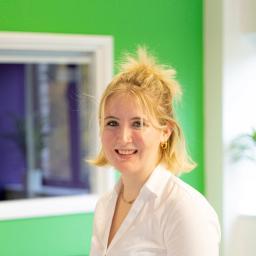Powerful flow cytometry technology accelerates stem cell research
Learn about the pioneering work of the Columbia Stem Cell Initiative and how technological advancements are helping drive scientific breakthroughs at its Flow Cytometry Core Facility
20 Jan 2024
Flow cytometry is a popular laboratory technique that is used to analyze and sort cells within complex samples. It involves the use of lasers to measure the characteristics of individual cells as they pass through a fluidics system, and detectors to analyze multiple fluorescent markers, enabling the identification and quantification of cells. This versatile technology has applications in multiple disciplines such as immunology, virology, cancer research, stem cell studies, drug development, and monitoring of disease progression, and has helped significantly advance scientific research in these areas.
In this article, Michael Kissner, Director of Operations at the Core Facility, outlines the work of the CSCI and the types of research and applications the facility supports. He also highlights the importance of the MA900 Multi-Application Cell Sorter from Sony Biotechnology, how this technology benefits users, and what the future holds for the expansion of the core facility.

The Columbia Stem Cell Initiative (CSCI) at Columbia University utilizes this technology in its trailblazing stem cell research. The CSCI Flow Cytometry Core Facility provides users with access to state-of-the-art flow cytometry technology to not only advance our understanding of stem cells but also support research across various other fields of the life sciences.
State-of-the-art flow cytometry technology accelerates scientific discoveries
The Columbia Stem Cell Initiative was established at Columbia University to bring together a network of scientific experts to advance scientific discovery in stem cell biology and tissue regeneration and with the ultimate aim of developing therapies for a variety of human diseases. The CSCI supports research through its Stem Cell Core Facility for cell isolation and gene editing and through its Flow Cytometry Core Facility for single-cell isolation and analyses. The Flow Cytometry Core Facility was established in 2017 after hematopoietic stem cell leading expert, Dr. Emmanuelle Passegué, was recruited to develop and expand the CSCI. The core facility aims to provide cutting-edge flow cytometry analytical and cell sorting tools, imaging cytometry, 10x Genomics, and other single-cell analysis services to the Columbia University community and external users.
“Our flow cytometry facility is accessible on a 24/7 basis which is extremely beneficial for users as samples that are unpredictable often don’t fall into convenient hours of operation,” states Kissner. “We have also developed a comprehensive training program to support users with the operation of all of our instruments and our expert team is on hand to help with experimental design, data analysis, and troubleshooting at all times.”
There are currently over 60 labs that are members of CSCI who all work on the same mission: To advance our understanding of stem cells in health and disease. The CSCI Flow Cytometry core facility alone supports a large number of principal investigators and independent users, with approximately 400 total users in the last year. Other than supporting stem cell studies, the Flow Cytometry Core Facility also has applications across other research fields. These include neuroscience – such as neurodegenerative and motor neuron disease research – cancer, bioengineering, immunology, and more.

Enhanced operations and unmatched performance
The CSCI flow cytometry core facility relies on the Sony Biotechnology MA900 Multi-Application Cell Sorters for its essential operations. This technology is easy to use and offers the necessary capabilities for most sorting applications, supporting 12 fluorescence parameters and 4-way sorting.
“Ease-of-use is one of the most important features of this type of technology, as many people are reluctant, and frankly don’t have the time, to learn how to work a new complicated piece of equipment,” comments Kissner. “Purchasing the Sony MA900 Cell Sorters has changed our life at the facility and significantly transformed our operations. The sophisticated software is user-friendly, even for individuals without technical expertise, and users can be trained to operate the instruments independently in as little as 2 hours. This is a stark improvement compared to our previous 8-hour training program.
Kissner goes on to explain that the advanced automation capabilities of the Sony MA900, including self-calibration, have greatly simplified operation and reduced the potential for user errors that could compromise valuable samples. The exceptional performance of the Sony MA900 Cell Sorter has exceeded his expectations by consistently producing high-quality cells with excellent recovery, viability, and reliability.
“We have used our first Sony MA900 continuously for two years with minimal issues,” says Kissner. “It is easily one of the best-performing cell sorters out there. In fact, we liked it so much that we purchased a second one and both instruments have become the workhorses of the facility. The technology’s robustness and reliability instill confidence, enabling users to leave precious samples, such as human microglia, sorting without constant supervision — this would never be recommended with other platforms.”
How to expand the flow cytometry core facility capabilities
The CSCI Flow Cytometry Core Facility is dedicated to continuously enhancing its capabilities by integrating new technologies into the lab. Currently, the team is seeking to acquire a new instrument with the remarkable ability to sort cells based on signal localization, a feature absent in their current instruments. This capability is particularly appealing because it will allow much more robust characterization of complex sample types which are very common in the core facility.
The facility is also hoping to add full-spectrum flow cytometry to its list of cell analysis tools. This groundbreaking technology enables the utilization of a greater number of colors and the subtraction of autofluorescent signals from cells, which significantly reduces background noise and increases sensitivity. Kissner explains that incorporating this critical capability into the lab will expand the scope of experiments for its users, especially those working with challenging samples such as primary neurons and brain tissue.
Additionally, the core facility aims to improve sample preparation by introducing instruments that facilitate robust sample handling. Simplifying the process of sample preparation not only streamlines workflows but also enhances consistency, which is vital for ensuring the reproducibility of experiments. By focusing on this aspect, the facility aims to further support successful research.
For further information on how researchers are utilizing the MA900, watch our video interview with Michael Kissner.

